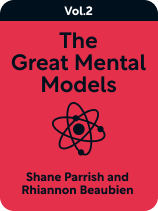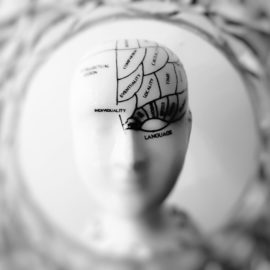

This article is an excerpt from the Shortform book guide to "The Great Mental Models Volume 2" by Shane Parrish and Rhiannon Beaubien. Shortform has the world's best summaries and analyses of books you should be reading.
Like this article? Sign up for a free trial here.
Why is change hard? How is momentum both a help and a hindrance to change? How can understanding friction help you remove barriers to progress?
In The Great Mental Models Volume 2, Rhiannon Beaubien and Shane Parrish argue that the laws of motion and thermodynamics can help us understand why change is hard. They discuss how the principles of inertia, momentum, and friction play a role in our lives.
Continue reading to see how these lessons of physics can help us understand resistance to change.
Why Change Is Hard
Beaubien and Parrish explain that, in physics, all systems tend toward equilibrium (a state of balance and rest) and entropy (a state of disorder in which energy is not available to do work). Likewise, our lives tend to lack structure unless we apply efforts to move in a desired direction. These efforts meet resistance in the form of inertia, momentum, and friction.
Inertia and Momentum
One reason why change is hard is that, like physical objects, our lives are subject to inertia—a physical principle by which objects resist changes to their state of motion or rest. Beaubien and Parrish explain that, in physics, inertia dictates that, unless they are acted upon by an outside force, objects that are moving tend to keep moving while objects at rest tend to stay at rest. Similarly, the principle of momentum describes the tendency of a moving object to stay in motion. Momentum is determined by an object’s mass and its current velocity. To oversimplify the physics, we could say that the heavier something is and the faster it’s already moving, the harder it is to stop.
Beaubien and Parrish argue that the concepts of inertia and momentum apply to our efforts to change things in our lives. For example, the principle of inertia makes it hard to start a new behavior. Say you want to exercise regularly. If you’ve never worked out before, it will take significant energy, time, planning, and willpower to actually do it. It’s like trying to move a large boulder—it could take a lot of force just to budge it those first few inches.
(Shortform note: The principle of inertia is part of the reason many habit change experts recommend starting small. For example, in Tiny Habits, BJ Fogg recommends basing behavioral change around very small steps. He says that this approach has numerous benefits, including the fact that it sets a low bar for success and requires minimal willpower to implement. In other words, tiny habits reduce the inertia of the behavior you’re trying to change by shrinking the metaphorical boulder until it’s more manageable.)
On the other hand, the authors point out that momentum can be both a help and a hindrance to behavior change. The more exercising becomes a habit, the easier it is to keep doing because it gains momentum. On the other hand, momentum can make it hard to stop doing something you’ve done for a long time, like mindlessly checking for updates on your phone. In both cases, habits are like the boulder—once it’s rolling, it’s hard to stop.
(Shortform note: Behavioral momentum goes beyond just breaking bad habits or forming new ones—according to James Clear, the aspects of our lives that have momentum come to define who we are as people. In Atomic Habits, Clear argues that behaviors and self-identity form a feedback loop: We base our sense of identity on our prevailing behaviors, and we choose behaviors based on how we see our identities. For that reason, Clear argues that lasting behavior change requires us to reevaluate how we see ourselves and recognize how that self-image relates to behavioral choices.)
Moreover, inertia and momentum don’t apply to just individual behaviors—Beaubien and Parrish argue that these concepts help explain why it can be hard to institute social change and why certain policies and practices stick around even when they’re harmful. For example, as early as 1912, researchers suspected that cigarettes cause cancer, and by the 1950s, that link was firmly established. Yet smoking was so widespread—and the tobacco industry so powerful—that in 1960, only a third of doctors agreed that cigarettes probably contribute to lung cancer. It took decades for anti-smoking campaigns to fully reverse smoking’s momentum and convince the public of its harm.
(Shortform note: In fact, major social changes can require so much energy that in The Great Mental Models Volume 3, the authors liken these changes to nuclear reactions. They argue that major change requires building a critical mass—a term that in nuclear physics describes the minimum amount of nuclear material required to sustain a chain reaction. In social terms, achieving critical mass means getting so many people on a certain side of an issue that they generate their own unstoppable momentum. For that reason, the authors suggest that if you want to change social policies, you shouldn’t attack the policies themselves—instead, you should focus on building a coalition of people who share your views and goals.)
Friction
Beaubien and Parrish point out that, when it comes to movement, objects aren’t affected by just their own properties of inertia and momentum—they’re also affected by external forces like friction. Similarly, the authors suggest, it’s worth paying attention to the external factors that slow us down so that we can create conditions more conducive to progress.
In physics, friction is a force that resists movement. Friction makes it harder to get a stationary object moving, and, when a moving object is in contact with another surface, friction slows that movement (and will eventually stop it). Picture a rubber hockey puck sliding across a sheet of ice. The puck can slide quite a distance before the ice’s minimal friction causes it to stop. Now imagine that same puck on an asphalt road. The rough surface has much greater friction than the ice, meaning the puck will slide very little, if at all (which is why street hockey requires either a ball or a purpose-made puck designed for pavement).
Beaubien and Parrish argue that understanding the principle of friction lets us develop more efficient organizations by eliminating the factors that slow movement. For example, digital money transfer company Wave set out to improve economic conditions for their customer base in Africa. By developing more reliable networks and charging lower transfer fees than their competitors, they saved their Senegalese customers over $200 million per year (about 1% of Senegal’s GDP). In other words, by reducing the friction in their product, Wave simultaneously built a successful business and significantly improved economic conditions for their customers.
(Shortform note: Though Beaubien and Parrish focus on organizational friction, it’s also worth focusing on friction at an individual level. In Atomic Habits, James Clear recommends leaving yourself obvious visual cues for habits you’re trying to develop. For example, if you want to work out every morning, you could place your workout clothes next to your bed. Doing so reduces the friction involved in taking up the new habit—because the clothes are a visual reminder, you don’t have to remember the workout on your own, nor do you have to go find the clothes before you can exercise. In effect, by reducing friction, you reduce the willpower needed to get your habit moving.)

———End of Preview———
Like what you just read? Read the rest of the world's best book summary and analysis of Shane Parrish and Rhiannon Beaubien's "The Great Mental Models Volume 2" at Shortform.
Here's what you'll find in our full The Great Mental Models Volume 2 summary:
- How you can understand anything by learning a finite set of rules and patterns
- How physics can help you improve interpersonal interactions
- Why making a major life change is so difficult






